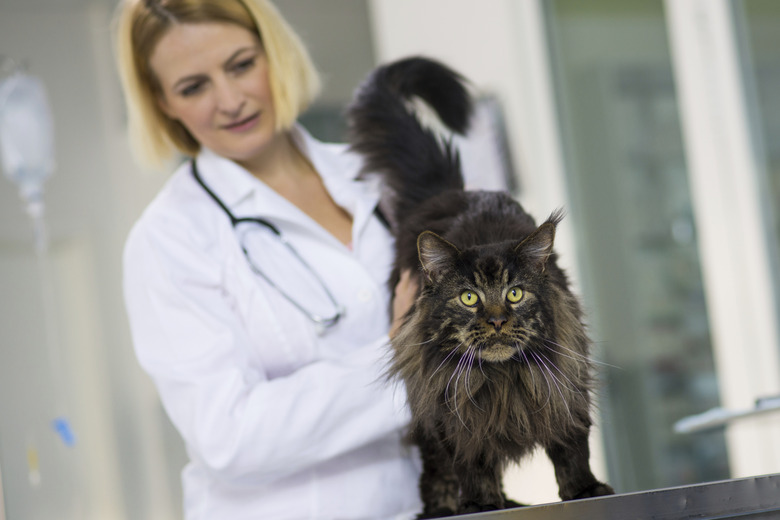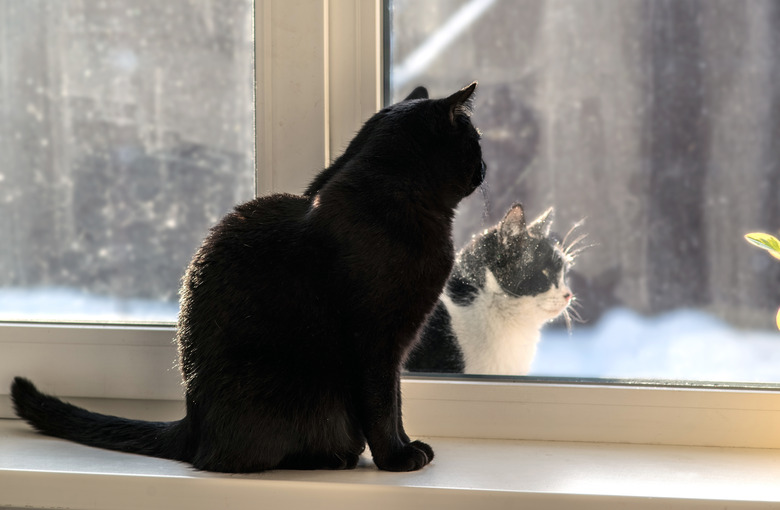Why Are My Cat's Back Legs Weak?
If your cat is suddenly having trouble making that jump from the floor to the counter, moves stiffly, or isn't walking quite right, there may be an issue with weak rear legs. There are many possible causes for this, including soft tissue injuries, ear issues that affect balance, arthritis, nerve damage, spinal issues, various infections, or even heart disease. For a senior cat, some diminished mobility may simply be a function of age, but even a young cat can suddenly develop issues with their hind end. Having a veterinarian evaluate the affected limb or limbs and diagnose the problem is the first step in pet care for this issue.
What does it mean for a cat's back leg to be weak?
What does it mean for a cat's back leg to be weak?
Hind leg weakness in cats happens when bearing weight on the back legs becomes difficult, uncomfortable, or painful or when the cat's back legs have lost sensation or have decreased sensation, giving them less control over them. This lameness can happen suddenly or gradually. Paraparesis is the technical term for when a cat shows weakness in both hind legs.
How to tell if my cat has back leg weakness
How to tell if my cat has back leg weakness
When a cat suddenly loses sensation in their back legs, it is hard to miss. The cat will likely be unable to walk, get around, or use their litter pan. However, if a cat is struggling with back leg weakness or their back legs won't work right and the onset is gradual, cat owners may not notice the subtle signs at first. Here are some symptoms to watch for:
- A new reluctance to exercise, jump, or climb
- Trouble urinating or defecating or pottying outside the litter box
- Limping, especially at the end of the day or when the cat is tired
- A stiff gait or slower than usual walking
- Increased sensitivity to being touched or petted
- A loss of interest in toys or chasing things
- Decreased appetite, which may lead to weight loss
- Matting or poor grooming due to an inability to bend or reach all parts
- Overgrooming or obsessive chewing of the leg or hip areas due to pain
- Difficulty moving from a lying position to a standing position
- Sleeping more than usual or acting generally lethargic
- Crying, yowling, or whimpering when moving or vocalizing excessively in general
- Holding one leg off the floor while standing
- Dragging one or both of the back paws
- Legs collapsing when trying to get up or stand
- Partial or full paralysis of the back end
Why does my cat have weak back legs?
Why does my cat have weak back legs?
There are many reasons a cat may have weak back legs. Common causes of hind limb weakness include:
- Arthritis
- Hip dysplasia (particularly common in Persian cats)
- Spinal cord injuries or a slipped disc
- Blood clots (i.e., arterial thromboembolism, affecting blood vessels such as the aorta, known as a saddle thrombus). A saddle thrombus causes a sudden decrease in blood supply to both hind legs, which is extremely painful. Affected cats will be quite vocal about the pain.
- Other vascular diseases, such as cardiomyopathy
- Feline diabetes, which can also lead to neuropathy
- Viral diseases, such as feline infectious peritonitis
- Metabolic diseases, such as kidney disease
- Hypokalemia (low potassium levels)
- Nerve damage
- Ear infections, which can affect balance
- Nutritional deficiencies
- Sarcopenia (age-related muscle loss)
- Congenital defects
- Neurological disorders
- Traumatic injury
Diagnosing the problem
Diagnosing the problem
Because there are numerous reasons a cat may develop rear leg weakness, it's important that they receive veterinary care to evaluate the cat's condition and have the problem properly diagnosed. The veterinarian will examine the cat's body, including front legs and back legs, and may run blood tests or take X-rays. If the problem is osteoarthritis, which is common in older cats, the cat may benefit from anti-inflammatory medications, joint supplements, and/or pain killers.
How to care for a cat with weak back legs
How to care for a cat with weak back legs
While a veterinarian will be needed to diagnose the specific cause of a cat's back end weakness, home care may also play a role in the cat's healing.
Limit your cat's movement
Whether the cat is suffering from nerve damage or another injury, rest is essential to the healing process. Confine your cat to a room free of climbing and jumping opportunities to minimize the chance they'll aggravate the condition. Add a soft cat bed and perhaps soothing music to help the cat rest. If you don't have an appropriate space to confine the cat, a large crate outfitted with a litter box will do the trick.
It may be necessary to modify the litter box to make it more accessible to a cat with a weakened rear limb. Options include cutting away one side of the litter box, purchasing a low-entry litter box, or using puppy pads with litter on them.
Prevent licking with an Elizabethan collar
If a cat chews at their leg excessively, it can make an injury worse or can even lead to infection. An Elizabethan collar, available from your veterinarian or a local pet store, can prevent unhealthy overgrooming.
Consider a splint
If a cat has suffered leg trauma, the veterinarian may opt to use a splint. However, many cats with a spinal cord injury do fine dragging their hind legs around. Bandages are generally not a good idea unless specifically recommended by a veterinarian, as they can cause more skin trauma than just leaving their legs alone.
Use cold compresses to reduce swelling
If a cat is experiencing swelling at the site of the injury, your veterinarian may recommend using a cold compress to reduce the inflammation. The veterinarian may call for application of the compress to the affected area at least three times a day for up to 10 minutes at a time.
Physical therapy and laser options
Cats with nerve damage in their legs risk muscle atrophy when the muscles aren't used. Physical therapy may help but don't attempt this on your own or you may risk further injury. Your veterinarian will better be able to direct you on the best way to help your cat exercise those muscles to keep the blood flowing and the muscles, joints, and tendons healthy. Cold laser therapy is another treatment that may help to speed healing. Additionally, your cat may benefit from acupuncture; speak with your veterinarian to learn more about its possible role in your cat's recovery.
Apply heat
Your veterinarian may also suggest applying heat in the form of a warm (not hot), moist compress to improve blood flow. Your veterinarian will tell you how often and how long you should apply this to your cat's injury. Never apply heat in the first two days after an injury.
Be patient
If your cat is suffering from weak rear legs due to nerve damage or injury, be patient. Nerve regeneration is a slow process, with nerve fibers growing at the rate of an inch per month. Improving your cat's health and helping them to recover from their injury will take time, care, and patience.
The bottom line
The bottom line
There are many reasons a cat may develop back leg weakness, including arthritis, spinal issues, viral infections, low potassium, heart issues, diabetes, neurological conditions, and traumatic injury. Cats with rear end weakness may struggle to walk or stand; lose interest in jumping, playing, eating, or grooming themselves; start having potty accidents; or stop using the litter box entirely. The cat may even cry out in pain (though in some cases, a loss of feeling rather than pain may be the problem). A visit to your DVM will allow them to diagnose the problem and determine the best treatment protocol to get your cat back on their feet (all four of them) again.



